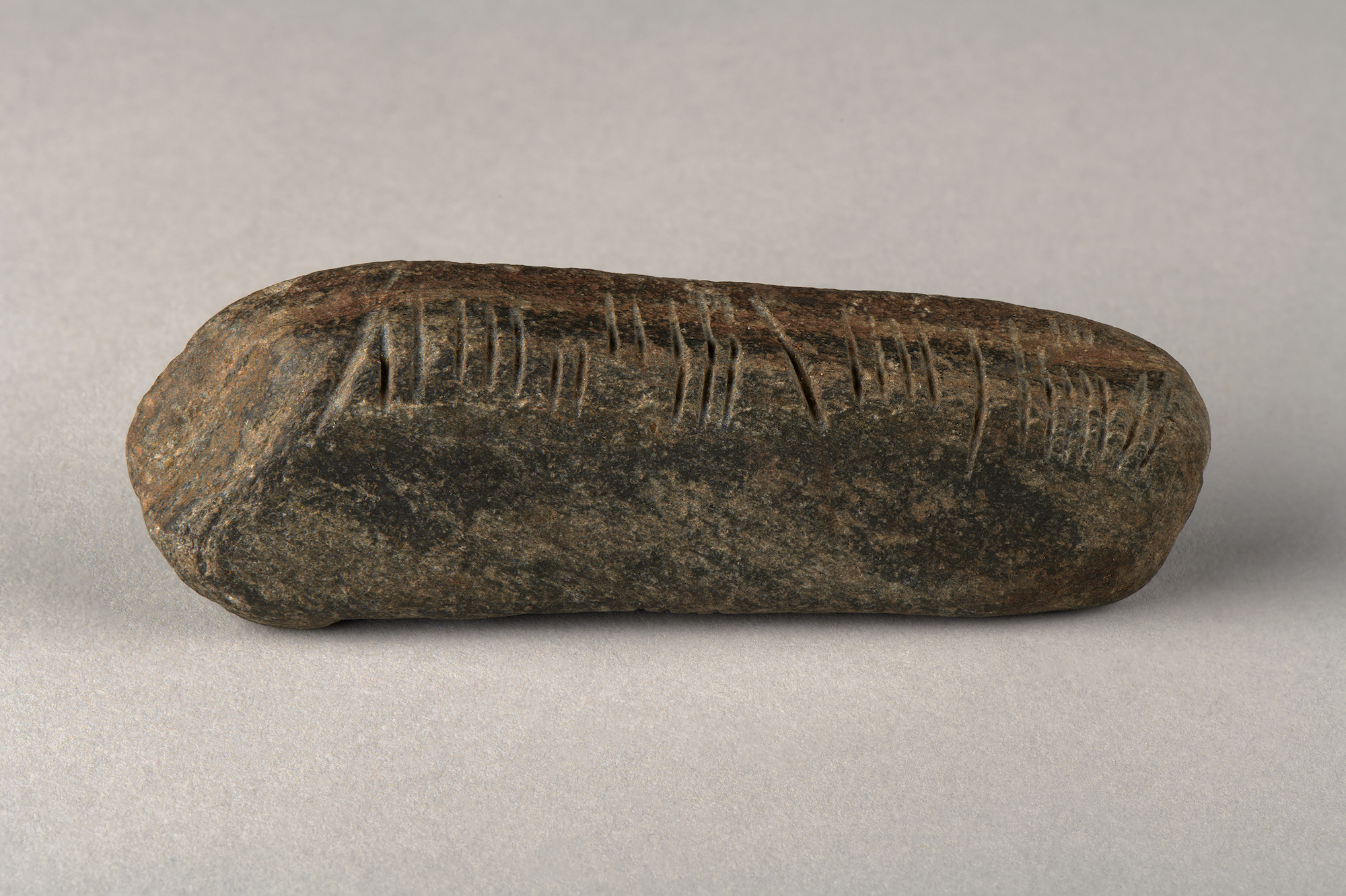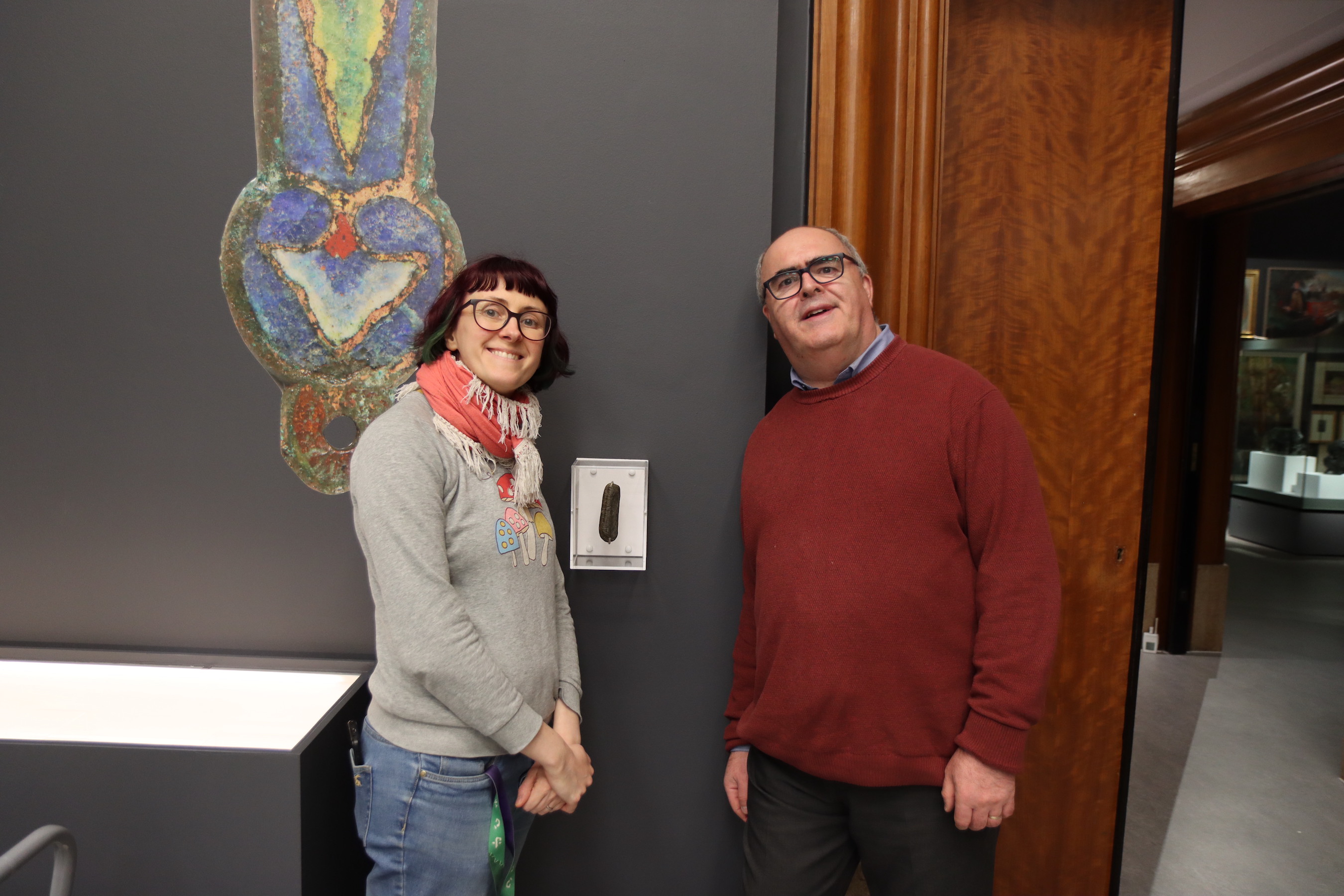A rare inscribed stone known as an ogham stone has been found in Coventry and is currently being displayed at the ‘Collecting Coventry’ exhibition at Herbert Art Gallery and Museum.
The stone was discovered by Coventry local Graham Senior during lockdown in May 2020, Coventry local Graham Senior while he was gardening. The rock, at around 11cm in length, appeared to have several horizontal incisions along the side. Senior shared his discovery with the Portable Antiquities Scheme, also known as finds.co.uk, who confirmed that the stone was inscribed with ogham, an Early Irish language dating back over 1,600 years.
Graham said: "It caught my eye as I was clearing an overgrown part of the garden. At first, I thought it was some kind of calendar. Finding out later it was an ogham stone and over 1,600 years old was incredible.”
Ogham was an alphabet used in the Early Medieval period primarily for writing in the early Irish language. Before the people of Ireland began using manuscripts made from vellum, they used the ogham writing system to inscribe on materials such as stone. Ogham is highly unusual among world writing systems, consisting solely of parallel lines in groups of 1-5. The stones provide insight into the Irish language before the use of the Latin insular script.
The earliest ogham inscriptions date back to the 4th and 6th centuries AD. Over 400 known ogham stones and fragments have survived, found predominantly in Ireland and on the Welsh coast. The main function of ogham stones is still uncertain. However, some historians believe that they were used for legal purposes in land disputes, as they are often found on or near boundaries of kin and bearing the names of ancestors.

The Early Medieval stone is believed to be over 1,600 years old
Teresa Gilmore, Finds Liaison Officer for East Staffordshire & North West Midlands said: “The first contact I had from the finder was via a phone call where he notified me of his prehistoric calendar stone. On receiving a photo of the stone, I got in contact with Katherine Forsyth at University of Glasgow who confirmed that it was definitely ogham and a very interesting find. The script is that of an early style, most likely 5th to 6th Century but possibly as early as 4th Century. The inscription reads: MALDUMCAIL / S / LASS. The first part of the inscription relates to a person's name: Mael Dumcail. The second part is less certain. As to why the object was deposited in Coventry and what it originally functioned as, are still research questions to be answered.”
Curator at Herbert Art Gallery and Museum, Ali Wells commented: “I was delighted when Graham offered to donate his incredible find to the museum. As the Herbert only collects in the city of Coventry boundary it’s rare that someone finds something a nationally significant as the Ogham stone. We might never know how Mael lost the stone and how it ended up in a garden in Coventry, but I hope future research will reveal more about its story. Visitors can see it on display in (upcoming/new exhibition) ‘Collecting Coventry’ until 27 April 2025. There are also 3d replicas of the stone as it was the first object to be scanned by our Media team.”
‘Collecting Coventry’ exhibition at Herbert Art Gallery & Museum runs until 27 April 2025

